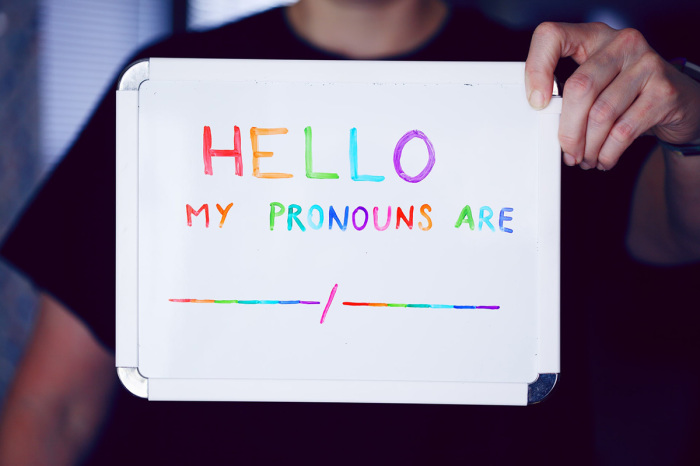LISD Outlines Inclusion and Compliance Plans – WLEN

Lenawee Intermediate School District Special Education Program Review
A comprehensive review of special education programs within the Lenawee Intermediate School District (LISD) was presented to the Board of Education. The report details progress toward strategic goals, with a significant focus on aligning district initiatives with the principles of Sustainable Development Goal 4 (SDG 4), which advocates for inclusive and equitable quality education for all learners.
Alignment with Sustainable Development Goal 4: Quality Education
The district’s special education strategy is fundamentally linked to achieving the targets of SDG 4. The initiatives are designed to ensure that all students, particularly those with disabilities, have equal access to quality learning opportunities, directly supporting the global commitment to inclusive education.
- Target 4.5: Ensure Equal Access: Efforts are centered on eliminating disparities in education and guaranteeing access for vulnerable students, including persons with disabilities, to all levels of education.
- Target 4.a: Build Inclusive Learning Environments: The district is actively working to build and upgrade educational facilities and practices to be disability-sensitive and provide safe, inclusive, and effective learning environments for all students.
Strategic Initiatives and Progress
The LISD has outlined several key areas of focus to advance its commitment to quality education and compliance with the Individuals with Disabilities Education Act (IDEA). These initiatives represent a long-term plan for systemic improvement.
- Enhancement of Service Delivery: The district is refining its service delivery models to better meet the needs of students with disabilities, ensuring that support strategies are applied consistently and effectively across all local schools.
- Adoption of Research-Based Curriculum: A primary goal is the expanded use of evidence-based curriculum and interventions. This commitment ensures that educational practices are effective and contribute to meaningful learning outcomes, a cornerstone of SDG 4.
- Capacity Building and Professional Development: To foster inclusive education, the district is investing in professional development for staff. This measure builds the capacity of educators to support diverse learning needs and implement inclusive practices effectively.
- Alignment with Federal and State Standards: The LISD reported steady progress in procedural reviews to ensure full compliance with federal standards. This includes a specific focus on Michigan’s priority of monitoring Least Restrictive Environment (LRE) goals, which is critical for achieving true educational inclusion.
Future Directives and Monitoring
Future efforts will concentrate on implementation, tracking, and accountability to ensure that strategic goals translate into tangible improvements for students.
- Implementation Tracking: The district will emphasize rigorous tracking and accountability mechanisms to monitor the progress and impact of its special education initiatives.
- Support for Inclusive Practices: LISD will continue to collaborate with local schools to support the integration of inclusive practices, reinforcing the commitment to the principles of SDG 4.
- Communication and Curriculum Review: Ongoing reviews of communication plans and curriculum adoption will be conducted to address breakdowns, ensure alignment, and drive continuous improvement toward providing a quality education for every student.
Analysis of Sustainable Development Goals in the Article
1. Which SDGs are addressed or connected to the issues highlighted in the article?
The article discusses issues related to special education programs, which directly connect to several Sustainable Development Goals (SDGs). The primary goals identified are:
- SDG 4: Quality Education: The core of the article is about improving educational services. It mentions “research-based curriculum and interventions,” “professional development,” and “inclusive education planning,” all of which are central to providing quality education for all students.
- SDG 10: Reduced Inequalities: By focusing on students with disabilities through compliance with the “Individuals with Disabilities Education Act (IDEA)” and prioritizing “inclusive practices,” the article addresses the need to reduce inequalities and ensure equal opportunities for vulnerable groups within the education system.
- SDG 16: Peace, Justice and Strong Institutions: The article highlights the administrative and governance aspects of the school district. The emphasis on “compliance,” “procedural reviews,” “implementation tracking,” and “accountability” points to the goal of building effective, accountable, and transparent institutions.
2. What specific targets under those SDGs can be identified based on the article’s content?
Based on the article’s content, the following specific targets can be identified:
- Target 4.5: “By 2030, eliminate gender disparities in education and ensure equal access to all levels of education and vocational training for the vulnerable, including persons with disabilities…”
- Justification: The article’s entire focus is on special education programs and compliance with the “Individuals with Disabilities Education Act (IDEA),” which is designed to ensure students with disabilities have equal access to education.
- Target 4.a: “Build and upgrade education facilities that are child, disability and gender sensitive and provide safe, non-violent, inclusive and effective learning environments for all.”
- Justification: The mention of “inclusive education planning” and the state’s priority of monitoring “least restrictive environment goals” directly relates to creating inclusive and effective learning environments for students with disabilities.
- Target 10.2: “By 2030, empower and promote the social, economic and political inclusion of all, irrespective of age, sex, disability, race, ethnicity, origin, religion or economic or other status.”
- Justification: The district’s efforts to improve service delivery for special education and support “inclusive practices” are direct actions to promote the inclusion of persons with disabilities within the educational community.
- Target 16.6: “Develop effective, accountable and transparent institutions at all levels.”
- Justification: The district administrators’ report on “procedural reviews,” “implementation tracking and accountability,” and “compliance with the Individuals with Disabilities Education Act (IDEA)” demonstrates a commitment to building an effective and accountable institutional framework.
3. Are there any indicators mentioned or implied in the article that can be used to measure progress towards the identified targets?
The article does not mention official SDG indicators by name, but it implies several metrics and processes that serve as de facto indicators for measuring progress:
- Compliance with IDEA: The article explicitly states that the review focused on “compliance with the Individuals with Disabilities Education Act (IDEA).” This serves as a direct indicator of progress towards ensuring equal access and rights for students with disabilities (relevant to Targets 4.5 and 10.2).
- Implementation of Inclusive Practices: The plan to “work with local schools to support inclusive practices” and monitor “least restrictive environment goals” implies that the extent and success of these implementations are key metrics (relevant to Target 4.a).
- Adoption of Research-Based Curriculum: The goal to “monitor curriculum adoption across programs” suggests that the rate of adoption of effective, research-based curricula is an indicator of educational quality (relevant to SDG 4).
- Procedural Reviews and Accountability Measures: The mention of “procedural reviews” and future efforts emphasizing “implementation tracking and accountability” are indicators of institutional effectiveness and transparency (relevant to Target 16.6).
- Participation in Professional Development: The discussion of “capacity-building measures, such as professional development” implies that the number of staff trained and the enhancement of their skills are used to measure progress in service quality (relevant to SDG 4).
4. Table of SDGs, Targets, and Indicators
| SDGs | Targets | Indicators (Mentioned or Implied in the Article) |
|---|---|---|
| SDG 4: Quality Education | Target 4.5: Ensure equal access to all levels of education for the vulnerable, including persons with disabilities.
Target 4.a: Provide inclusive and effective learning environments for all. |
|
| SDG 10: Reduced Inequalities | Target 10.2: Empower and promote the social inclusion of all, irrespective of disability. |
|
| SDG 16: Peace, Justice and Strong Institutions | Target 16.6: Develop effective, accountable and transparent institutions. |
|
Source: wlen.com

What is Your Reaction?
 Like
0
Like
0
 Dislike
0
Dislike
0
 Love
0
Love
0
 Funny
0
Funny
0
 Angry
0
Angry
0
 Sad
0
Sad
0
 Wow
0
Wow
0







































































